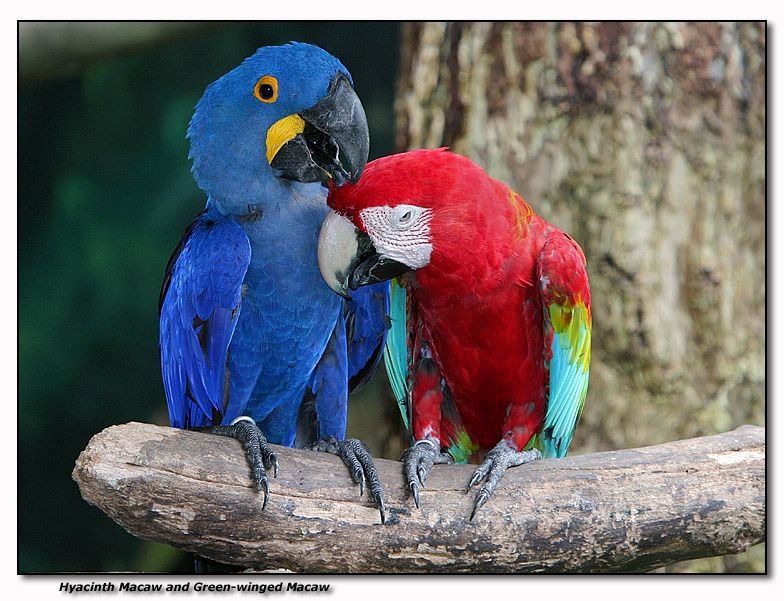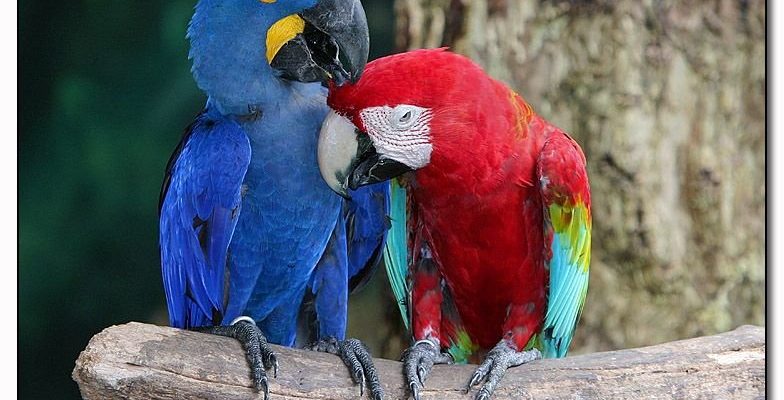
There are several unique species of macaws, each with its own set of characteristics. You might be wondering about the differences among these beautiful creatures. From the majestic Hyacinth Macaw to the commonly recognized Blue and Gold Macaw, there’s a diverse range to explore. Let’s dive into the different types of macaws to better understand what makes each one special.
Blue and Gold Macaw: A Colorful Icon
Blue and Gold Macaws are perhaps the most recognizable type of macaw, thanks to their striking colors. These birds boast vibrant blue feathers on their backs and bright yellow underparts. They’re not just a pretty face; they’re also known for being highly intelligent and social.
These macaws can grow to about 30 inches long and can live for over 50 years in captivity. That means if you’re considering one as a pet, you’re committing for the long haul! They thrive on interaction and can learn to mimic human speech and sounds, making them delightful companions. You might find yourself having full-on conversations with these talkative beauties.
Diet and Care: Blue and Gold Macaws primarily eat nuts, fruits, and seeds in the wild. If you’re thinking of caring for one, be prepared to provide a balanced diet along with mental stimulation through toys and social interaction.
Green-Winged Macaw: The Gentle Giant
Next up is the Green-Winged Macaw, also known as the Red-Shouldered Macaw. While they have a more subdued color palette—featuring emerald green, red, and blue—these birds carry a majestic presence. They’re slightly larger than the Blue and Gold Macaw, reaching lengths of about 33 inches.
What’s fascinating about Green-Winged Macaws is their gentle temperament. Unlike some other macaw species, they’re generally known to be sweet and patient. They can be a bit shy but warm up nicely given time and patience.
Social Needs: Like all macaws, they require social interaction to thrive. You’ll need to spend quality time with them daily, engaging in play and training. With patience, they can learn tricks and even a few words!
Hyacinth Macaw: The Bluest of Them All
When it comes to size and beauty, the Hyacinth Macaw stands out from the crowd. These impressive birds, often dubbed “gentle giants,” can reach lengths of up to 40 inches, making them the largest macaw species. Their stunning cobalt blue feathers are truly a sight to behold, and their large, curved beaks are perfect for cracking open tough nuts.
Hyacinth Macaws are known for their affectionate nature. They bond deeply with their owners and often display playful behaviors. However, they do need plenty of space and stimulation to keep them happy.
Conservation Status: Hyacinth Macaws are currently considered vulnerable, primarily due to habitat loss and the illegal pet trade. Supporting conservation efforts can help ensure that future generations can enjoy these magnificent birds.
Scarlet Macaw: The Funky Red Beauty
The Scarlet Macaw is a true showstopper with its vibrant red, yellow, and blue feathers. These colorful birds are about 30 inches long and are known for their loud calls and spirited personalities. With their playful antics, they can instantly brighten up any environment.
Scarlet Macaws are also incredibly smart, capable of learning a multitude of commands and tricks. Their playful nature means they thrive in environments where they can interact with their owners and explore their surroundings.
Social Interaction: Like many macaws, Scarlet Macaws require companionship and can become bored or even destructive if left alone for long periods. Providing engaging toys and regular interaction is crucial for their well-being.
Military Macaw: The Lesser-Known Warrior
Though often overshadowed by their more vibrant cousins, the Military Macaw is a fantastic species worth knowing about. They feature a green body with a red forehead and yellow accents, giving them a unique look. These birds are medium-sized at about 28 inches and have a more rugged appearance compared to other macaws.
Military Macaws are known for their intelligence and adaptability. They can thrive in various environments, from tropical rainforests to savannas. Their calm demeanor makes them a bit easier to manage, which is great for first-time macaw owners.
Training Potential: They respond well to training and can learn numerous vocalizations and tricks. This makes them not only fun companions but also engaging pets that can participate in various activities.
Other Macaw Species Worth Mentioning
While we’ve covered several major types, there are a few other macaws that deserve a mention. These include:
- Mini Macaw: Smaller in size and often quieter, these macaws are charming and make lovely pets.
- Spix’s Macaw: Once thought to be extinct in the wild, efforts are underway to save this beautiful blue macaw.
- Blue-Headed Macaw: A lesser-known species with a unique blue head and green body, making them quite distinctive.
Each of these species has its own set of traits that cater to varying preferences for pet owners or bird enthusiasts.
Choosing the Right Macaw for You
Now that we’ve explored some different types of macaws, you might be thinking about which one would fit best in your life. Choosing the right macaw involves considering several factors:
1. Space Requirements: Larger macaws need more room to spread their wings and play. Make sure you have enough space in your home.
2. Social Needs: All macaws require a lot of interaction. If you’re often away from home, a macaw may not be the best pet for you.
3. Lifespan: Consider how long the bird will live. Many macaws can live for 50 years or more, so it’s a long-term commitment.
4. Lifestyle Fit: Think about your daily routine. Some macaws need more attention and stimulation than others.
Ultimately, the right macaw for you will depend on your personal lifestyle, space, and willingness to commit.
—
Macaws are fascinating creatures that can bring joy and companionship into your life. Whether you prefer the vibrant Blue and Gold Macaw or the majestic Hyacinth, each type offers its own unique charm. Remember, they require dedication and care, so it’s important to select the right one for your lifestyle! By understanding the different kinds of macaws available, you’ll be better equipped to decide which feathered friend is right for you.

